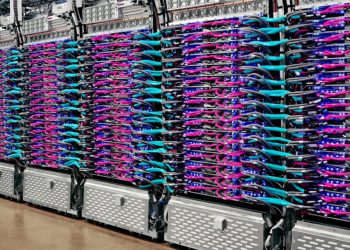StarlingX—the open source edge computing and IoT cloud platform optimized for low-latency and high-performance applications—is available in its 3.0 release today. Addressing what is projected by 451 Research to be a combined $12 billion market in 2023 for OpenStack® and Kubernetes, StarlingX pairs the two technologies with Ceph to provide a container-based infrastructure for edge implementations in scalable solutions.
Headline Features of StarlingX 3.0
To further support the low-latency and distributed cloud requirements of edge computing and industrial IoT use cases, the community prioritized these features in StarlingX 3.0:
- Infrastructure and Cluster Monitoring—Version 3 introduces a new Armada manifest (stx-monitor) that defines the necessary software components and services to deploy a monitoring solution for the infrastructure and Kubernetes cluster as well as the services it is running.
- Integration with OpenStack Train—StarlingX is now based on the latest OpenStack release, Train.
- Integrate Distributed Clouds with Containers—Required changes are in place to integrate distributed clouds with containerized OpenStack.
- New Options for Hardware Accelerator Support—StarlingX now implements the initial Intel FPGA integration (via Darby Creek) into the platform. This support is in addition to other hardware accelerator support in StarlingX.
- Time Sensitive Networking (TSN) for VMs—TSN is a set of evolving standards developed by IEEE to allow for time-sensitive traffic on Ethernet-based LANs, which provides bounded, worst-case latency. It is a key technology that targets different segments such as automotive and industrial. TSN enabling on StarlingX is a major effort, since TSN is composed of multiple IEEE standards and varied use cases.
Community Interest Maintains Rapid Release Pace
The 1.0 release (2018) provided a hardened OpenStack platform on dedicated physical servers. StarlingX 2.0, released September 2019, leveraged further building blocks to strengthen open infrastructure to deliver a hardened platform that integrates OpenStack and Kubernetes to provide flexibility, robustness and support for mixed workloads.
Since the project launched a year ago, there have been 5,928 commits from 187 authors. Today’s 3.0 release—just four months after the 2.0 release—adds 876 commits from 70 developers representing 99Cloud, FiberHome, Intel, the OpenStack Foundation, Red Hat and Wind River, among others.
StarlingX Solves Problems at the Edge
The purpose of the StarlingX project is to re-configure proven cloud technologies for edge computing, delivering the maturity and robustness of cloud in a massively distributed compute environment. StarlingX is a complete edge cloud infrastructure platform for bare metal, VMs and containers, providing high availability (HA), quality of service (QoS), performance and low latency. StarlingX leverages components of other open source projects such as Ceph, Linux, KVM, OpenStack and Kubernetes, complementing them with new services such as configuration and fault management to collectively address the strict requirements of edge computing use cases in both carrier and industrial applications.
StarlingX Applications Run the Gamut of Edge and IoT Use Cases
Use cases for StarlingX include transportation-based IoT applications; industrial automation; 5G; smart buildings and cities; autonomous vehicles; location-based retail; virtual radio access networks (vRAN); augmented and virtual reality; high-definition media content delivery; surveillance; healthcare imaging, diagnostics and monitoring; and universal customer premise equipment (uCPE).
Meet the StarlingX Community at OpenDev + PTG in Vancouver
Members of the StarlingX community will gather at the next OSF collaborative open infrastructure event, OpenDev + PTG in Vancouver, June 8-11 for working sessions to map out the future of the project and collaboratively solve problems around deployment, operations, upgrades and more.
Community Accolades for StarlingX 3.0
“As the 5G era approaches, StarlingX will be the key to meet the requirement of edge computing. 99Cloud has witnessed and participated in the StarlingX 3.0 release which brings the maturity of the edge cloud platform to a new stage. As one of the leading contributors of StarlingX, we’ll continuously contribute to the community and work with customers or partners to promote StarlingX 3.0 to commercial deployment.”
—Shuquan Huang, technical director, 99Cloud Inc.
“StarlingX 3.0 delivers some very exciting new capabilities. The StarlingX charter has always been to improve and simplify Day 1 and Day 2 operations for deploying workloads at the edge, and the 3.0 release takes some big steps towards that goal. StarlingX 3.0 includes a distributed cloud configuration that provides the foundation for geographically distributed edge use cases. StarlingX delivers single-pane-of-glass and zero-touch automated management for a distributed edge cloud, combined with ultra-low latencies for deterministic performance. These are critical capabilities for performance-sensitive edge use cases such as 5G vRAN, on-premise factory automation, and autonomous vehicles.”
—Glenn Seiler, vice president of open source strategy, Wind River

for developers and enthusiasts






